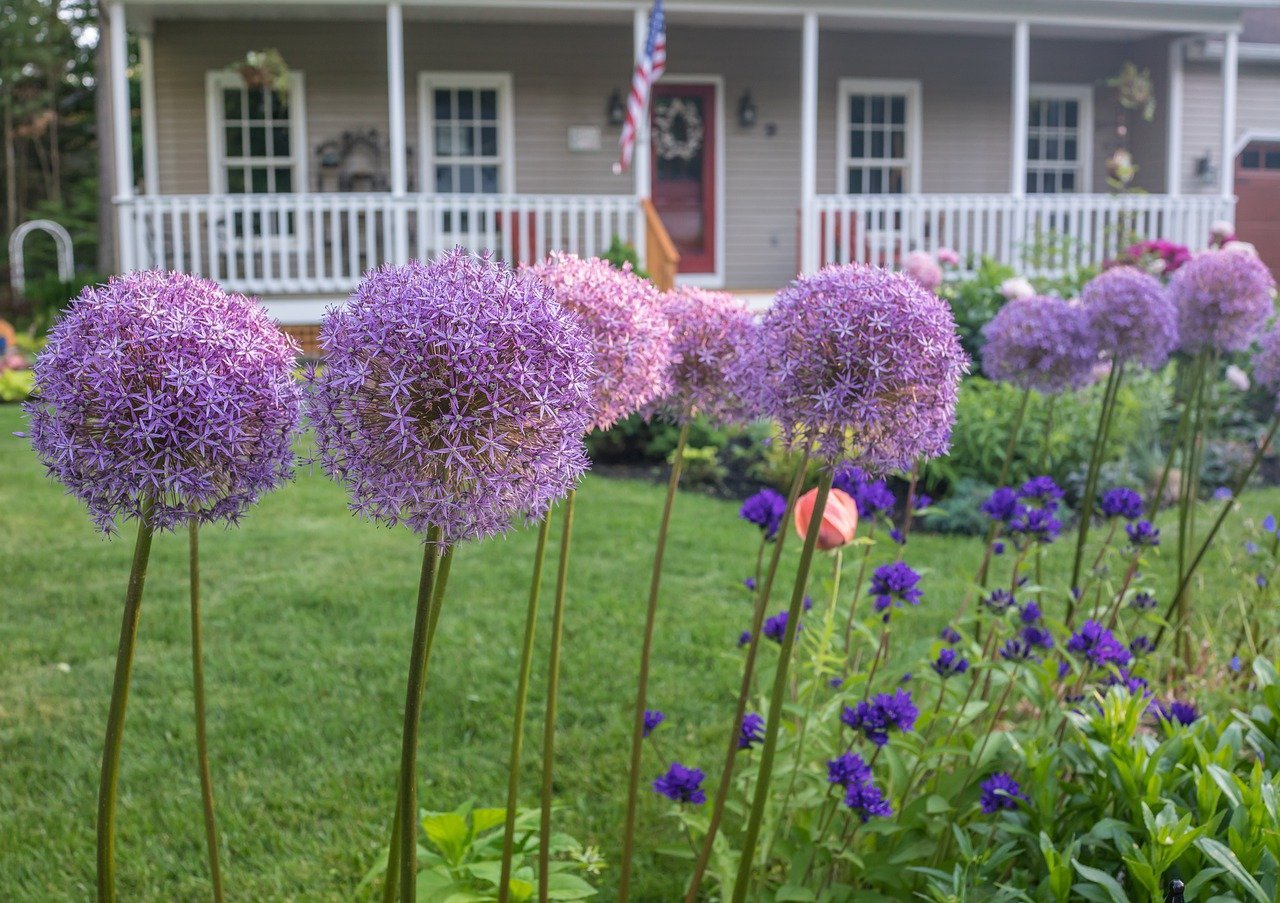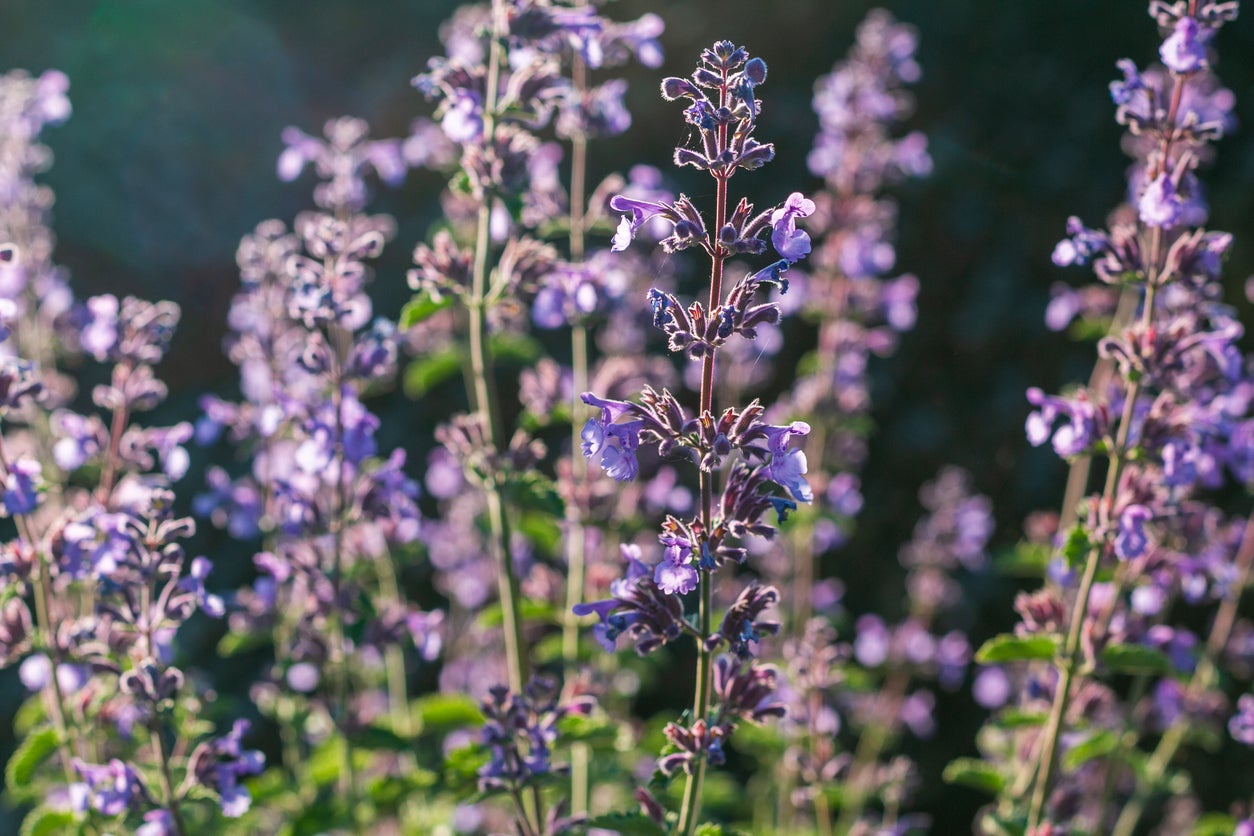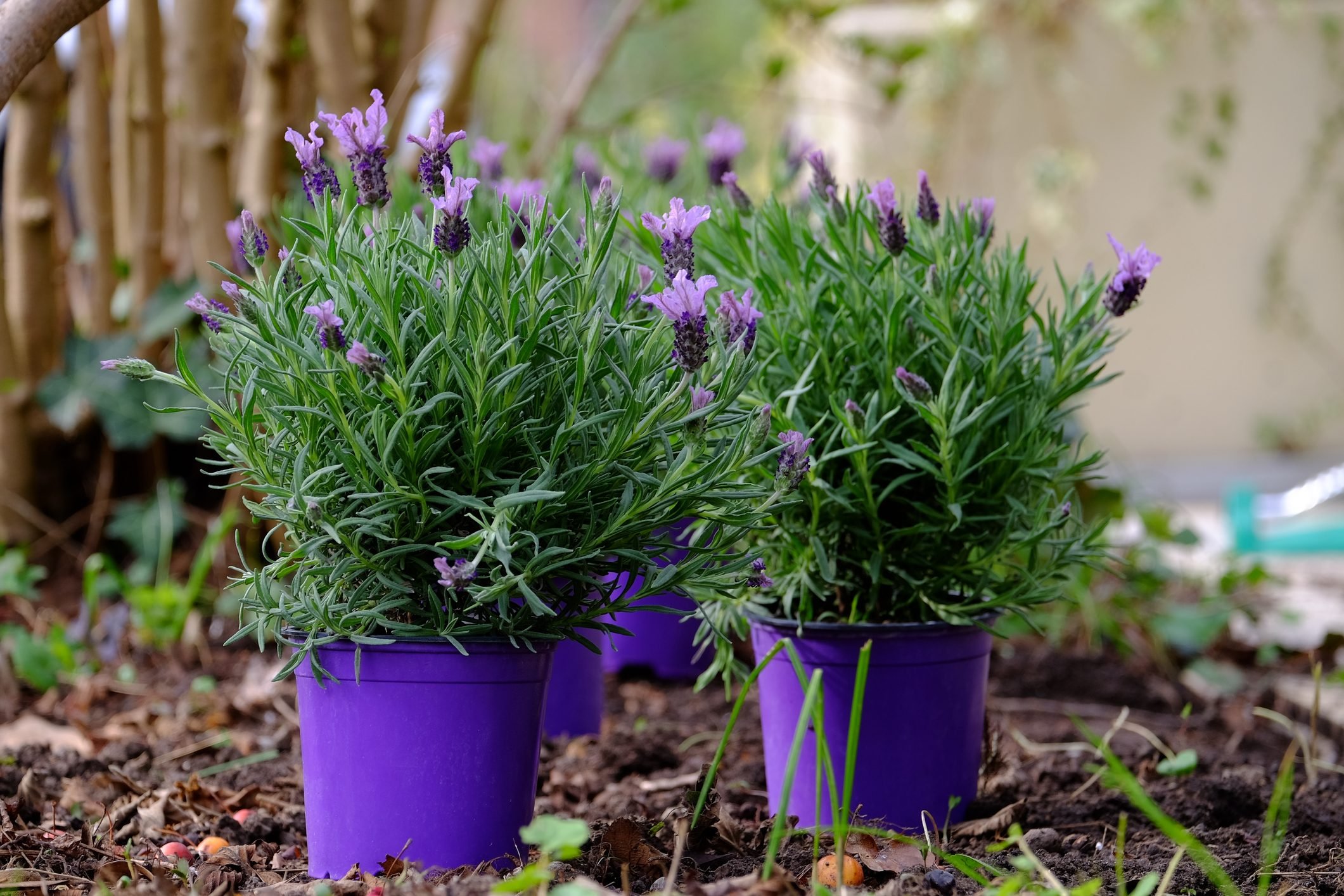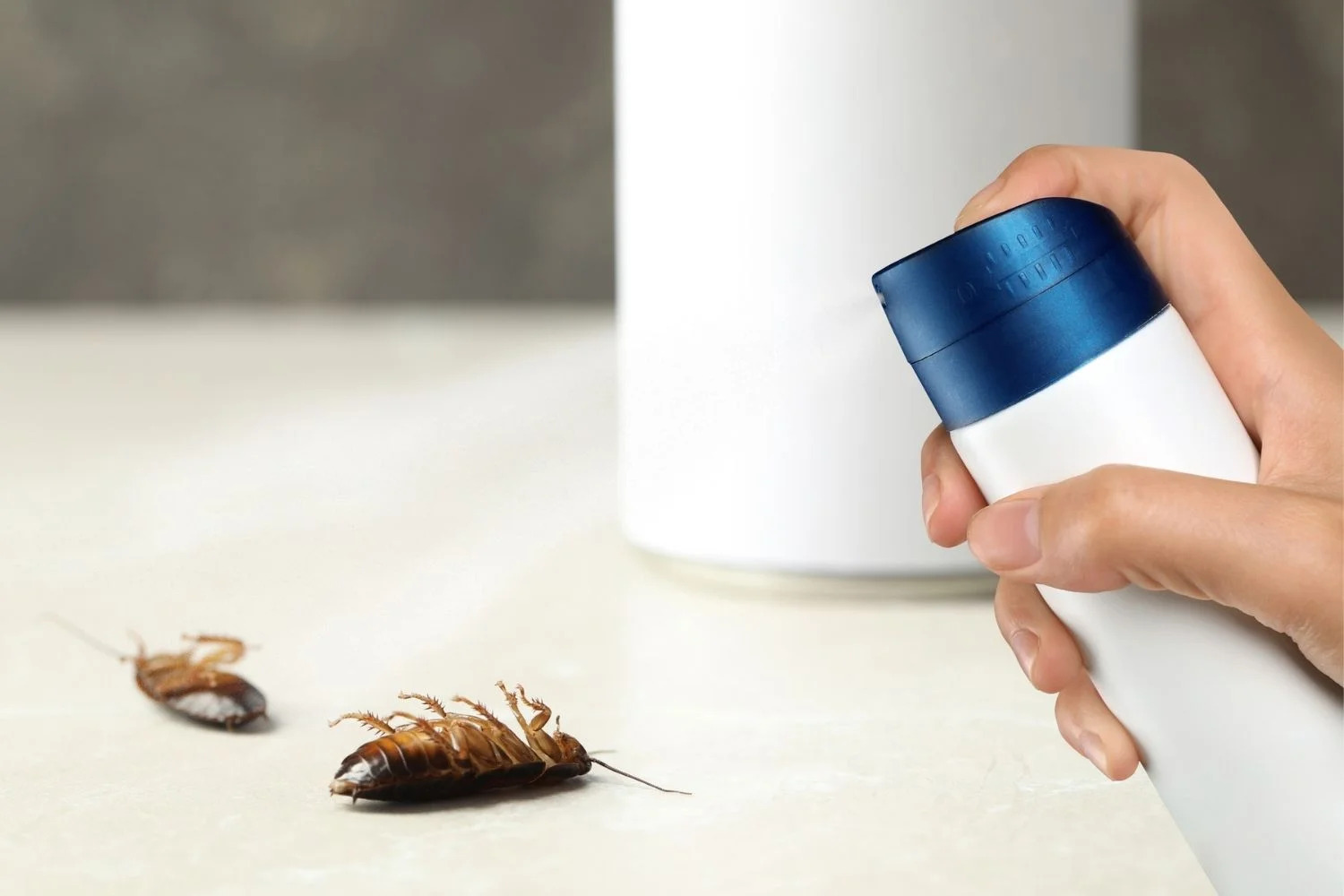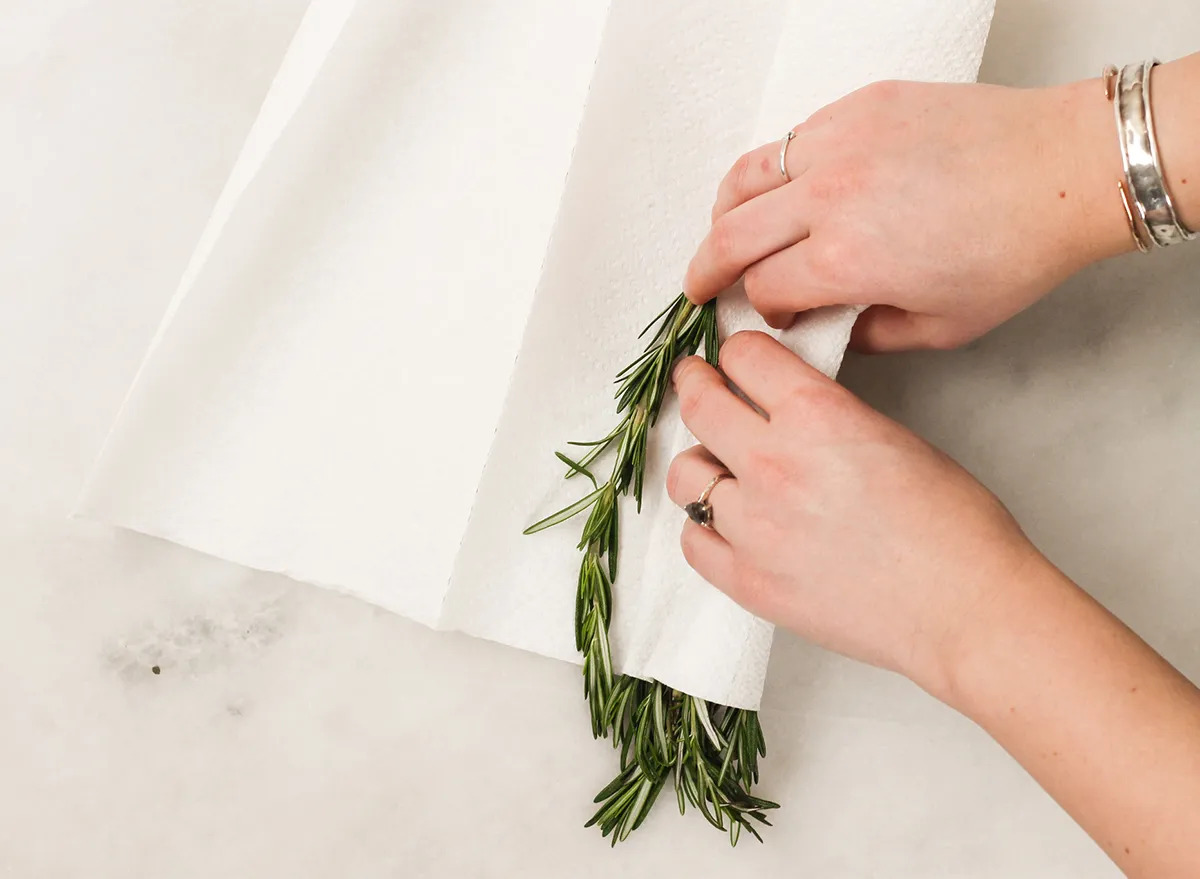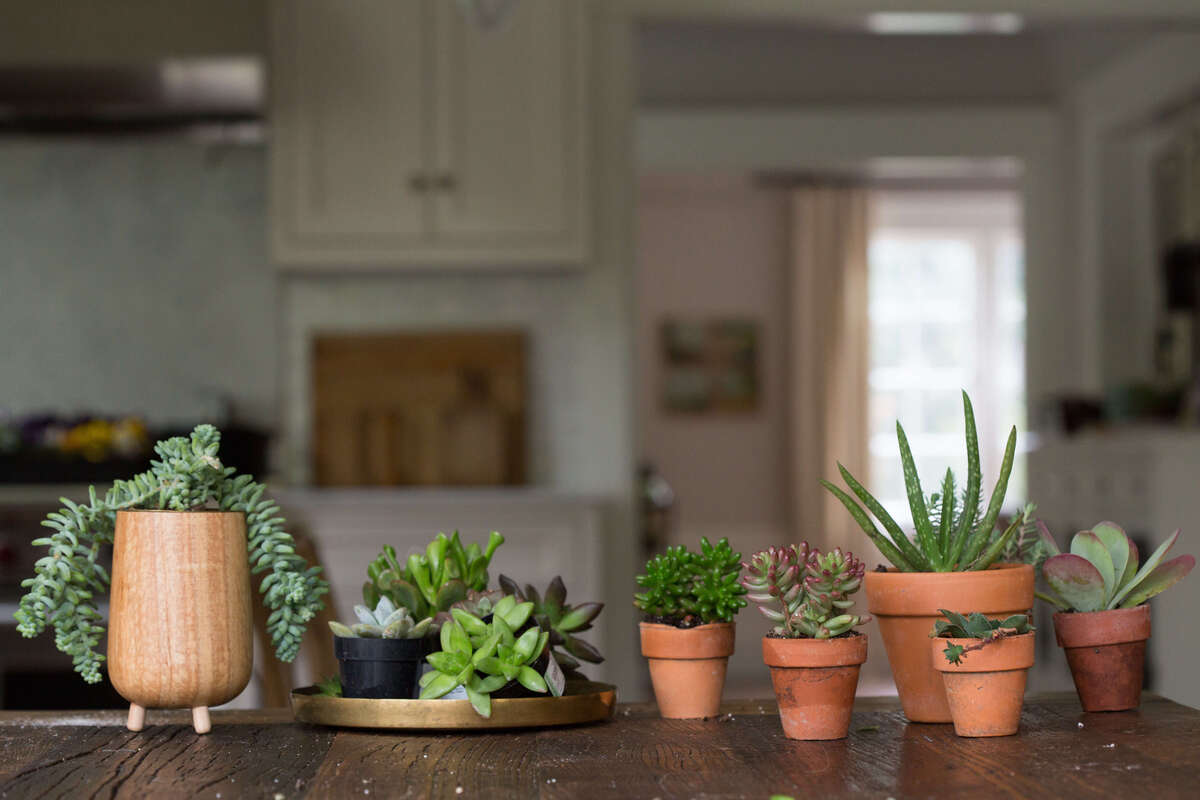Home>Gardening News and Trends>Latest News>What Are The Best Insects To Keep As Pets
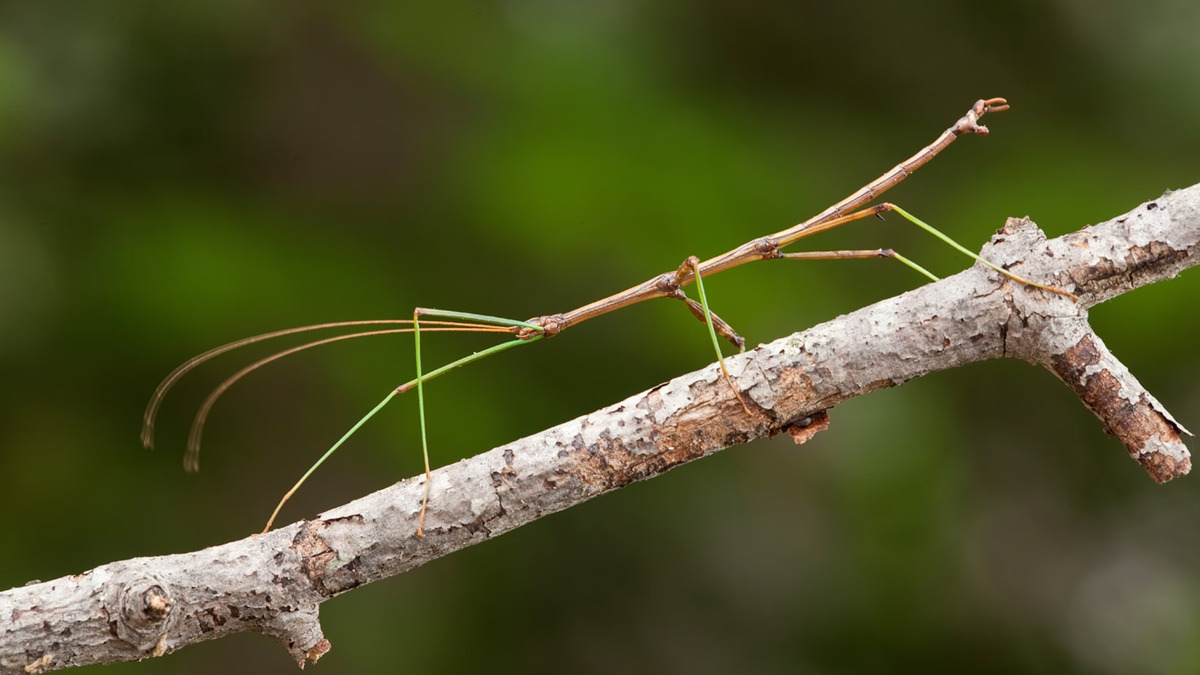

Latest News
What Are The Best Insects To Keep As Pets
Modified: January 22, 2024
Discover the latest news about insects as pets and find out which ones are considered the best choices for a unique and fascinating companion.
(Many of the links in this article redirect to a specific reviewed product. Your purchase of these products through affiliate links helps to generate commission for Chicagolandgardening.com, at no extra cost. Learn more)
Table of Contents
Introduction
Keeping pets is a popular pastime for many people, but when we think of pets, insects are not usually the first thing that comes to mind. However, insects can make fascinating and low-maintenance pets that can bring joy and wonder into your life. In recent years, the trend of keeping insects as pets has been on the rise, and for good reason. These tiny creatures offer unique experiences and can be a great alternative to traditional pets.
Unlike dogs or cats, insects require minimal space and are relatively low-cost to care for. They don’t need walks or constant attention, making them ideal for people with busy lifestyles or limited living spaces. Additionally, insects come in a variety of shapes, sizes, and colors, making them visually appealing and intriguing to observe.
But why should you consider keeping insects as pets in the first place? One of the benefits is the educational aspect. Insects are a rich source of learning opportunities for both children and adults. By observing their behavior, life cycles, and unique characteristics, you can gain a deeper understanding of the natural world and develop a sense of appreciation for these often misunderstood creatures.
Furthermore, keeping insects as pets can be a fun and engaging way to introduce children to responsibility and empathy. Taking care of a living creature, even if it’s just a small insect, teaches them about the importance of providing a suitable environment, proper nutrition, and attention to detail.
Another advantage of having insects as pets is their low environmental impact. They require fewer resources compared to traditional pets and have a smaller carbon footprint. Insects also contribute to ecosystem balance and play important roles in pollination and decomposition. By keeping them as pets, you can contribute to their conservation and ecological understanding.
While the idea of keeping insects as pets might seem unconventional to some, their unique attributes and benefits make them an intriguing option for pet lovers. In the following sections, we will explore some of the most popular insect pets and the factors to consider when choosing the right one for you.
Benefits of Keeping Insects as Pets
Keeping insects as pets offers a range of benefits that make them a worthwhile addition to your household. Here are some of the key advantages:
1. Low Maintenance: Insects require minimal care compared to traditional pets. They don’t need daily walks, extensive grooming, or constant attention. This makes them a great choice for busy individuals or those who have limited time for pet care.
2. Cost-Effective: Insects are generally inexpensive to acquire and maintain. Their housing requirements are minimal, and their dietary needs can often be met with readily available food items such as fruits, vegetables, or specialized insect diets.
3. Fascinating Observation: Insects have intricate behaviors and fascinating life cycles. By keeping them as pets, you have the opportunity to observe their unique behaviors up close. Watching a praying mantis capture its prey or witnessing the transformation of a caterpillar into a butterfly can be a source of endless wonder and educational value.
4. Eco-Friendly: Insects have a smaller ecological footprint compared to larger pets like dogs or cats. They require less space, consume fewer resources, and generate less waste. By choosing insects as pets, you are making a more sustainable and environmentally conscious choice.
5. Educational Value: Keeping insects as pets can be a fantastic learning experience for people of all ages. Children can develop a sense of responsibility and empathy by caring for a living creature. Additionally, observing the behavior and life cycles of insects can deepen your understanding of biology, ecology, and the natural world around us.
6. Conversations Starter: Having an insect pet can spark interesting conversations and generate curiosity among friends and family. It provides an opportunity to share knowledge about these often misunderstood and underappreciated creatures and can lead to engaging discussions about their importance in the ecosystem.
7. Therapeutic Effect: Many people find the presence of insects calming and therapeutic. Observing their movements and focused behavior can have a relaxing effect, helping to reduce stress and promote mindfulness. Taking care of insects can also provide a sense of purpose and fulfillment.
As you can see, keeping insects as pets offers a range of benefits that go beyond mere companionship. Whether you’re looking for a low-maintenance pet, an educational experience, or a unique way to connect with nature, insects can provide a fulfilling and rewarding pet ownership experience.
Factors to Consider Before Choosing an Insect Pet
While keeping insects as pets can be an exciting and rewarding experience, it’s important to consider several factors before making a decision. Here are some key factors to keep in mind:
1. Legal Restrictions: Before getting an insect pet, it’s essential to check local regulations and ensure that keeping the specific insect species is legal in your area. Some insects may have restrictions due to their potential as invasive species or for other reasons. Familiarize yourself with the legal requirements to avoid any legal complications.
2. Lifespan and Growth Rate: Different insect species have varying lifespans and growth rates. Some insects, like butterflies, have relatively short lifespans, while others, like tarantulas, can live for several years. Consider the lifespan and growth rate of the insect you’re interested in to ensure you can commit to their care requirements over their entire lifespan.
3. Space Requirements: While insects generally require less space than traditional pets, it’s important to consider their specific space requirements. Some insects, like stick insects or beetles, can be housed in small enclosures, while others, like tarantulas, may require larger terrariums. Make sure you have sufficient space to accommodate the needs of your chosen insect pet.
4. Feeding Requirements: Each insect species has specific dietary needs. Some insects may eat a variety of plant matter, while others may require live prey. Consider the availability and cost of their food source and ensure you are comfortable with providing the appropriate diet for your insect pet.
5. Handling and Interaction: Not all insects can be handled or interacted with in the same way as traditional pets. Some insects, such as mantises or tarantulas, may require minimal handling or only be observed from a distance. Consider your comfort level with handling insects and choose a species that aligns with your preferences.
6. Allergies and Sensitivities: It’s important to be aware of any allergies or sensitivities you or others in your household may have. Some people may be allergic to insect bites, stings, or their excretions. Research the specific insect species you’re interested in to ensure it doesn’t pose any health risks or discomfort to you or your family members.
7. Availability and Source: Consider the availability and ethical sourcing of the insect you wish to keep as a pet. Ensure that you source them from reputable breeders or sellers who adhere to responsible and sustainable practices. Avoid supporting the illegal trade of insects or collecting them from the wild, as this can harm natural populations.
By taking these factors into account, you can make an informed decision about which insect pet is most suitable for your lifestyle and preferences. Proper research and preparation will ensure a positive and fulfilling experience as a responsible insect pet owner.
Popular Insects to Keep as Pets
When it comes to choosing an insect pet, there are numerous options available. Each insect species has its own unique characteristics and requirements. Here are some popular insects that are commonly kept as pets:
- Ants: Ant farms are a fascinating way to observe the complex social structures and behavior of ants. These tiny creatures can be kept in specially designed setups that mimic their natural habitat, allowing you to watch them build intricate tunnels and care for their young.
- Beetles: Beetles, such as the rhinoceros beetle or the Hercules beetle, are known for their impressive sizes and unique features. They can be kept in terrariums and fed on a variety of fruits, vegetables, and specialized beetle diets.
- Praying Mantises: Praying mantises are revered for their unique appearance and interesting hunting behavior. They are relatively easy to care for and can be kept in well-ventilated enclosures with a variety of live insects as their food source.
- Stick Insects: Stick insects, also known as walking sticks, are masters of camouflage. They are low-maintenance pets that require minimal handling. They can be kept in enclosures with branches and leaves that mimic their natural environment.
- Cockroaches: Certain species of cockroaches, such as Madagascar hissing cockroaches, have gained popularity as pets. They are easy to care for, are not associated with disease transmission, and can be housed in small enclosures.
- Tarantulas: Tarantulas may not be suitable for everyone, but for those who enjoy exotic pets, they can be a fascinating choice. Tarantulas require specialized setups with proper ventilation and temperature control. They are carnivorous and feed on live prey.
- Millipedes: Millipedes are often appreciated for their gentle nature and interesting armor-like appearance. They are low-maintenance pets that can be kept in well-ventilated enclosures with substrates, such as soil and leaf litter.
- Butterflies and Moths: Rearing butterflies and moths from caterpillars is a popular educational activity for both children and adults. It involves providing the appropriate food source, such as specific host plants, and providing a safe environment for their metamorphosis process.
- Crickets and Grasshoppers: Crickets and grasshoppers are relatively easy to care for and are commonly used as live food for other pet animals. They can be kept in well-ventilated containers with suitable substrates and provided with a nutritious diet.
These are just a few examples of the diverse range of insects that can be kept as pets. Before bringing an insect pet into your home, it’s important to thoroughly research the specific care requirements of the chosen species. This will ensure that you can provide the appropriate environment, diet, and attention needed for their well-being. Each insect pet offers a unique and captivating experience, allowing you to appreciate the fascinating world of these often overlooked creatures.
Ants
Ants are highly social insects with complex hierarchical colonies, making them a popular choice for insect enthusiasts. Keeping ants as pets can provide a fascinating glimpse into their intricate social structures and behaviors. Here are some key factors to consider when keeping ants as pets:
- Housing: Ants are best kept in specially designed ant farms or formicariums that mimic their natural habitat. These setups typically consist of a nest area, tunnels, and space for foraging. The enclosure should be escape-proof with proper ventilation to ensure the ants’ well-being.
- Species Selection: There are various ant species available for keeping as pets, each with its own set of characteristics. Some popular choices include harvester ants, carpenter ants, and fire ants. Research different species to find one that suits your preferences and meets legal requirements in your area.
- Feeding: Ants are omnivorous insects that have varied dietary needs. They feed on a combination of sugary substances, such as honey or sugar water, as well as protein sources like insects or special ant food. Providing a balanced diet is essential for their health and overall colony success.
- Observation and Care: One of the joys of keeping ants as pets is observing their daily activities and interactions. Ants engage in tasks such as foraging, caring for larvae, and maintaining the nest. Regular observation allows you to appreciate their fascinating behaviors and learn about their complex society.
- Expansion and Maintenance: As an ant colony grows, they will require more space. Some ant farms provide expansion options, allowing you to increase the size of the enclosure as needed. Regular maintenance, such as cleaning, adjusting humidity levels, and providing fresh food, is important to ensure the health of the colony.
- Safety and Containment: It’s crucial to prevent ant escapes to protect both your home and the local environment. Ensure that the ant farm or formicarium is securely sealed and that there are no gaps or cracks through which the ants can escape. Proper containment prevents potential issues with invasive species.
Keeping ants as pets offers a unique opportunity to study and appreciate the complex world of social insects. With the right setup and care, you can enjoy the wonder of observing their behaviors and progression as they build their colony. However, it’s essential to research and follow proper ant-keeping guidelines to ensure the wellbeing of both the ants and their surroundings.
Beetles
Beetles are fascinating insects known for their incredible diversity in size, shape, and color. Keeping beetles as pets can provide a unique and captivating experience. Here are some important considerations when it comes to keeping beetles as pets:
- Housing: Beetles need appropriate housing that mimics their natural environment. This can include ventilated terrariums or glass containers with a substrate layer, such as soil or wood chips. The enclosure should offer enough space for the beetles to move around comfortably.
- Species Selection: There are countless beetle species to choose from, each with its own care requirements. Popular pet beetle species include rhinoceros beetles, stag beetles, and flower beetles. Research different species to find one that suits your preferences and meets legal requirements in your area.
- Feeding: Beetles have diverse feeding habits, with some being herbivorous and others being omnivorous. It’s important to provide a suitable diet for your specific beetle species. This can include a combination of fresh fruits, vegetables, decaying wood, and specialized beetle diets available in pet stores.
- Temperature and Humidity: Different beetle species have different temperature and humidity requirements. It’s essential to create the ideal environment for your beetle pet. This may involve using a heat source, like a heat pad or lamp, to provide the appropriate temperature, and misting the enclosure to maintain proper humidity levels.
- Observation and Enrichment: Watching beetles go about their daily activities can be extremely rewarding. They may engage in behaviors such as feeding, burrowing, or interacting with their environment. Providing enrichments like branches, leaves, or hiding spots can enhance their natural behaviors and create a stimulating environment.
- Breeding and Lifecycle: Some beetle species can be bred in captivity, allowing you to witness the fascinating lifecycle of these insects. It’s important to research the specific breeding requirements for your beetle species if you are interested in breeding them.
- Handling: Beetles are generally not meant to be handled regularly, as they can be quite delicate. It’s best to observe them from outside the enclosure to avoid any unintentional harm. If handling is necessary, use gentle methods and ensure your hands are clean and free from substances that could harm the beetle.
Keeping beetles as pets can provide a captivating experience, allowing you to appreciate the incredible diversity and beauty of these insects. With proper research and care, you can create a suitable environment for your beetle pets and enjoy observing their fascinating behaviors and life cycles. Remember to always prioritize the well-being of these creatures and provide them with a suitable and enriching habitat.
Praying Mantises
Praying mantises are fascinating insects known for their unique body shape and predatory behavior. Keeping praying mantises as pets can offer an up-close and personal view into the world of these captivating creatures. Here are some important things to consider when keeping praying mantises as pets:
- Housing: Praying mantises are typically kept in enclosures, such as glass tanks or mesh cages. The enclosure should be well-ventilated to ensure adequate airflow. It’s important to provide enough space for the mantis to move around comfortably, as well as suitable branches or twigs for climbing and perching.
- Species Selection: There are many different species of praying mantises, each with their own unique characteristics and care requirements. Some popular pet mantis species include the Chinese mantis, the Carolina mantis, and the Ghost mantis. Research different species to find one that suits your preferences and meets legal requirements in your area.
- Feeding: Praying mantises are carnivorous insects, and as such, they primarily feed on live insects. It’s essential to provide a regular supply of appropriate prey, such as fruit flies, house flies, or crickets. The size of the prey should be suitable for the mantis, as they have specific dietary needs at different stages of their life cycle.
- Temperature and Humidity: Praying mantises are sensitive to temperature and humidity fluctuations. It’s important to provide a suitable temperature range and humidity level within their enclosure. This typically involves maintaining a temperature range of 70-80°F (21-27°C) and a humidity level of around 50-60%. Using a temperature-controlled heating pad or lamp and misting the enclosure can help create the right conditions.
- Observation and Care: Watching praying mantises in action can be a captivating experience. They are stealthy hunters with impressive agility and precision. Spend time observing their behaviors, such as their unique body movement and their patient and calculated hunting techniques. Regular cleaning of the enclosure and monitoring for any signs of stress or illness are also crucial aspects of caring for a mantis.
- Molting: Praying mantises go through molting stages as they grow. During this time, they shed their exoskeleton to reveal a larger one underneath. It’s important to provide a safe and quiet space for the mantis during molting, as they are vulnerable and fragile during this process. Avoid handling or disturbing them during molting periods.
- Handling: While some mantis species tolerate handling to some extent, it’s generally recommended to minimize direct contact. Praying mantises have delicate bodies and limbs that can be easily damaged. If handling is necessary, use gentle and cautious methods, taking care not to stress or injure the mantis.
Keeping praying mantises as pets offers a unique opportunity to witness the fascinating predatory behavior and intricate movements of these insects. By providing the proper care and environment, you can enjoy observing their hunting techniques and the natural beauty of their unique appearances. Remember to always prioritize the well-being of your mantis pet, ensuring they have the appropriate food, temperature, humidity, and space to thrive.
Stick Insects
Stick insects, also known as walking sticks, are fascinating creatures that have evolved to perfectly resemble twigs or branches. Keeping stick insects as pets can be a rewarding experience, allowing you to observe their unique camouflage and gentle nature. Here are some important considerations when keeping stick insects as pets:
- Housing: Stick insects require a suitable enclosure that provides a comfortable and secure environment. The enclosure should be spacious enough to accommodate their size and allow them to move about freely. It should also include branches or twigs for climbing and perching, which mimic their natural habitat.
- Species Selection: There are various species of stick insects available, each with its own specific care requirements. Some popular pet stick insect species include the Indian stick insect, the Giant spiny stick insect, and the Thorny devil stick insect. Research different species to find one that suits your preferences and meets legal requirements in your area.
- Feeding: Stick insects are herbivorous and primarily feed on leaves. It’s important to provide a suitable food source for your particular species of stick insect. This can include fresh foliage from plants such as bramble, rose bush, ivy, or eucalyptus. Regularly provide fresh food and remove any uneaten portions to maintain the stick insects’ health.
- Temperature and Humidity: Stick insects thrive in specific temperature and humidity conditions. It’s important to maintain the appropriate environment within their enclosure. Most stick insects prefer temperatures between 75-85°F (24-29°C) and humidity levels of around 50-60%. Using a heat source and misting the enclosure can help create the right conditions.
- Camouflage and Behavior: One of the most fascinating aspects of keeping stick insects as pets is observing their incredible camouflage. They have evolved to resemble twigs or branches, allowing them to blend seamlessly into their surroundings. Spend time observing their natural behaviors, such as their slow movement and swaying motion, which further enhances their disguise.
- Handling: Stick insects are delicate creatures that should be handled with care, if at all. While some species tolerate gentle handling, it’s generally recommended to minimize direct contact. If handling is necessary, always use a gentle touch and avoid excessive stress or pressure on their bodies to prevent injury.
- Breeding: Stick insects are known for their unique breeding habits, including parthenogenesis, where females can reproduce without mating. If you’re interested in breeding stick insects, research the specific requirements for the species you have. This may involve providing specific temperatures, appropriate food sources, and separate enclosures for maintaining breeding pairs.
Keeping stick insects as pets offers a chance to admire their remarkable camouflage adaptations and gentle disposition. By providing a suitable enclosure, maintaining the proper temperature and humidity, and offering an appropriate diet, you can create a thriving environment for these fascinating insects. Enjoy observing their natural behaviors and the wonder of their disguised appearance.
Cockroaches
Cockroaches may not be the typical choice for a pet, but certain species, such as Madagascar hissing cockroaches, have gained popularity as low-maintenance and fascinating pets. Here are some important considerations when keeping cockroaches as pets:
- Housing: Cockroaches can be housed in glass or plastic terrariums with secure lids to prevent escapes. The enclosure should have proper ventilation to maintain air circulation. Adding hiding spots and climbing structures, such as egg cartons or small branches, can enhance their habitat.
- Species Selection: Madagascar hissing cockroaches are among the most commonly kept cockroach species due to their docile nature. They are also known for their unique hissing sound produced by expelling air. Research different species and choose one that is legal to keep as a pet and matches your preferences.
- Feeding: Cockroaches are detritivores and can be fed a varied diet of fruits, vegetables, and commercially-available insect diets. Ensure a balanced and nutritious diet to meet their dietary requirements. Remember to provide fresh food regularly and remove any uneaten food to prevent mold or bacteria growth.
- Temperature and Humidity: Cockroaches generally prefer warmer temperatures. Maintain an ideal temperature range of 75-85°F (24-29°C). Ensure proper humidity levels by misting the enclosure lightly or providing a shallow water dish. Regularly monitor temperature and humidity levels to ensure the cockroaches’ well-being.
- Cleanliness and Hygiene: While cockroaches are known to be hardy and resilient, it’s important to maintain a clean environment for their health. Regularly clean the enclosure by removing feces, uneaten food, and any decaying matter. Ensure good sanitation practices to prevent the growth of harmful bacteria or parasites.
- Handling: Cockroaches can be handled, but it’s important to do so with care. Gently scoop them up with your hand or place them on a flat surface before handling. Wash your hands both before and after handling them to prevent any potential transmission of bacteria.
- Escape Prevention: Cockroaches are agile and can crawl into small crevices, so it’s crucial to ensure their enclosure is escape-proof. Regularly check for any gaps, holes, or loose lids. Keep the enclosure away from potential escape routes, such as open windows or doors.
Keeping cockroaches as pets can be an unexpected and intriguing choice. With proper care and maintenance of their habitat, you can enjoy observing their unique behaviors and adaptations. Remember to check the legality of keeping cockroaches as pets in your area and provide the necessary attention to create a comfortable and stimulating environment for these fascinating creatures.
Tarantulas
Tarantulas may not be the conventional choice for a pet, but many enthusiasts find these eight-legged creatures fascinating and rewarding to keep. If you’re considering keeping a tarantula as a pet, here are some important factors to consider:
- Housing: Tarantulas require a suitable enclosure, often referred to as a terrarium or vivarium. The enclosure should provide enough space for the spider to move around comfortably and include hiding spots, such as half logs or cork bark, to create a sense of security.
- Species Selection: There is a wide variety of tarantula species available, each with its own characteristics and care requirements. Research different species and choose one that matches your experience level and preferences. Some popular pet tarantula species include the Mexican Red Knee, Chilean Rose, and Brazilian Black.
- Feeding: Tarantulas are carnivorous and feed on live prey, such as crickets, roaches, or other suitable insects. The size of the prey should be appropriate for the size of the tarantula. It’s important to provide a varied and balanced diet to meet their nutritional needs.
- Temperature and Humidity: Tarantulas come from various regions with different climate conditions. It’s crucial to provide the appropriate temperature and humidity levels for your specific tarantula species. This may involve using heating pads or lamps to maintain the temperature and misting the enclosure for humidity control.
- Handling: Tarantulas are generally not recommended for handling, as they can be delicate and have the potential to bite if threatened or mishandled. It’s best to observe and appreciate them from outside the enclosure. If you must handle them, it should only be done by experienced individuals, and proper precautions should be taken.
- Enrichment: Tarantulas are primarily sedentary creatures, but they benefit from a stimulating environment. You can provide hides, branches, and artificial plants to create an interesting and visually appealing enclosure. Rearranging the enclosure every now and then can also provide mental stimulation for the tarantula.
- Maintenance: Regular maintenance of the tarantula’s enclosure is important for their well-being. This involves cleaning out uneaten prey items, removing molting remnants, and maintaining proper hygiene to prevent bacterial or fungal growth. Regularly inspect the enclosure for any signs of stress, injury, or illness.
Keeping a tarantula as a pet can be an exciting experience for those who appreciate these fascinating arachnids. With the right preparation, care, and understanding of their specific needs, you can create a suitable habitat for your tarantula and enjoy observing their unique behaviors and intriguing adaptations.
Millipedes
Millipedes are fascinating invertebrates known for their distinctive cylindrical bodies and numerous legs. Keeping millipedes as pets can provide a unique and educational experience. Here are some important considerations when it comes to keeping millipedes as pets:
- Housing: Millipedes require a proper enclosure that allows them to burrow and move around freely. A terrarium with a secure lid is ideal, as it provides the necessary ventilation while preventing escape. The substrate should be a mix of soil, leaf litter, and other organic materials to recreate their natural environment.
- Species Selection: There are numerous species of millipedes, each with different care requirements. Research different species and choose one that matches your preferences and experience level. Some popular pet millipede species include the Giant African millipede, Bumblebee millipede, and Fire millipede.
- Feeding: Millipedes are detritivores and feed on decaying organic matter, such as leaf litter and decaying plant material. They also consume fruits and vegetables. Providing a varied diet is important to ensure that they receive the necessary nutrients. Fresh food should be provided regularly and any uneaten portions should be removed promptly.
- Temperature and Humidity: Millipedes thrive in a specific range of temperature and humidity. Maintaining a temperature between 70-82°F (21-28°C) and a humidity level of around 70% is generally suitable. Mist the enclosure regularly to maintain the humidity level, and use a hygrometer to monitor it accurately.
- Handling: Millipedes are generally not handled as they have delicate bodies and can secrete defensive substances. It’s best to observe them from outside the enclosure. If necessary, gentle handling can be done with clean hands or a soft tool, ensuring minimal stress to the millipede.
- Multi-Species Enclosures: Some millipede species can be kept together in a multi-species enclosure, while others are best kept individually. Research the compatibility of different species if you wish to create a diverse millipede habitat. Avoid housing millipedes with other animals that may prey upon or harm them.
- Enrichment: Millipedes benefit from a suitable habitat with hiding spots, such as pieces of bark or leaf litter. Adding natural elements like branches, rocks, and wood can create a more stimulating environment. Rearranging the enclosure occasionally can provide mental stimulation for the millipedes.
Keeping millipedes as pets can be a fascinating endeavor, allowing you to observe their unique behaviors and appreciate their vital role in decomposing organic matter. With the right enclosure setup, appropriate feeding, and attention to their specific temperature and humidity requirements, you can create a thriving habitat for your millipede pets. Enjoy the wonder of their movements and the natural beauty they bring to your home.
Butterflies and Moths
Butterflies and moths are enchanting insects known for their vibrant colors and delicate wings. Rearing butterflies and moths can be a rewarding and educational experience. Here are some important considerations when it comes to keeping butterflies and moths as pets:
- Life Cycle: Butterflies and moths undergo a fascinating metamorphosis from egg to caterpillar to pupa to adult. Rearing them as pets allows you to witness this remarkable transformation firsthand and learn about the different stages of their life cycle.
- Species Selection: There is a wide variety of butterfly and moth species to choose from depending on your location and preferences. Research which species are native to your area and which ones are suitable for rearing as pets. Some popular choices include the Monarch butterfly, Luna moth, and Painted lady butterfly.
- Enclosure and Host Plants: Creating a suitable environment for butterflies and moths involves providing an enclosure, such as a mesh butterfly house or netted cage. Additionally, the larvae (caterpillars) will require specific host plants to feed on. Research the preferred host plants for the species you are rearing and ensure a fresh supply is available.
- Feeding and Care: Caterpillars have specific dietary needs, generally feeding on leaves of their host plants. Ensure a fresh and appropriate food source is always available for the caterpillars. Additionally, butterflies and moths can be fed a sugar-water solution or nectar from flowers. Regularly clean the enclosure to maintain hygiene.
- Protection from Predators: Butterflies and moths are vulnerable to predation, both as caterpillars and as adults. Protect them from potential predators, such as birds or other insects, by keeping them in a secure enclosure. Providing adequate hiding spots and avoiding the use of pesticides in the vicinity can also help ensure their safety.
- Releasing Adult Butterflies: Once the adult butterflies or moths emerge from their pupae, they should be released into their natural habitat. This allows them to mate, lay eggs, and contribute to the population. Ensure the release location is suitable for the species and provides the necessary resources, such as nectar-rich flowers and host plants.
- Educational Opportunity: Rearing butterflies and moths as pets can provide valuable educational opportunities for people of all ages. It allows you to learn about their life cycle, behavior, and ecological importance. It also fosters a sense of appreciation for the natural world and the importance of conservation efforts.
Rearing butterflies and moths as pets can be a magical experience, providing a close-up view of their extraordinary life cycle. By creating a suitable environment, providing proper food, and releasing them responsibly, you can contribute to the conservation of these beautiful insects. Enjoy the wonder of their transformations and the joy they bring to your surroundings.
Crickets and Grasshoppers
Crickets and grasshoppers are fascinating insects known for their unique songs and remarkable jumping ability. Keeping crickets and grasshoppers as pets can be an interactive and entertaining experience. Here are some important considerations when it comes to keeping crickets and grasshoppers as pets:
- Housing: Crickets and grasshoppers need an enclosure that offers ample space for their movement. A well-ventilated tank or container with a secure lid is ideal. Provide hiding spots, such as small branches or cardboard tubes, to give them a sense of security.
- Species Selection: There are numerous cricket and grasshopper species available for keeping as pets. Some popular choices include House crickets, Field crickets, and Red-legged grasshoppers. Research different species and choose one that suits your preferences in terms of appearance, behavior, and ease of care.
- Feeding: Crickets and grasshoppers are mainly herbivorous and can be fed a diet of fresh fruits, vegetables, and commercial cricket food. Dust their food with a calcium supplement to ensure they receive adequate nutrition. Remove any uneaten food to prevent mold or bacterial growth.
- Temperature and Humidity: Crickets and grasshoppers have specific temperature and humidity requirements. Most species thrive in a temperature range of 75-85°F (24-29°C) and a humidity level between 40-50%. Use a thermometer and hygrometer to monitor and maintain appropriate conditions within their enclosure.
- Observation and Interaction: Crickets and grasshoppers are active insects that can provide hours of entertainment. Observe their behaviors, such as chirping or jumping, and interact with them using gentle methods. However, avoid handling them excessively as it can cause stress or injury to the insects.
- Cleanliness: Regular cleaning of the enclosure is important to maintain the health of crickets and grasshoppers. Remove any dead insects, uneaten food, or feces from the enclosure. Keep the environment clean and hygienic to prevent the spread of bacteria or parasites.
- Breeding: Breeding crickets and grasshoppers can be a fascinating aspect of keeping them as pets. However, it requires specific conditions and expertise. If breeding is your goal, research the specific requirements for the species you have, including temperature, humidity, and suitable breeding setups.
- Safety Considerations: When keeping crickets or grasshoppers as pets, it’s essential to prevent their escape from the enclosure. Ensure the lid is secure and there are no openings or gaps. Keep their enclosure away from household pesticides or chemicals that could harm them.
Keeping crickets and grasshoppers as pets can offer a unique and engaging experience. With the right setup, proper feeding, and appropriate environmental conditions, you can create an enjoyable habitat for these fascinating insects. Enjoy observing their behaviors, listening to their chirping, and appreciating their beauty in your home.
Caring for Insect Pets
Proper care is essential for the health and well-being of insect pets. While the specific care requirements may vary depending on the species, here are some general guidelines for caring for insect pets:
- Research and Education: Before bringing an insect pet into your home, take the time to research and educate yourself about their specific needs. Learn about their natural habitat, diet, temperature requirements, and any unique behaviors or characteristics they may have.
- Housing: Provide a suitable and secure enclosure for your insect pet. Consider the size, ventilation, temperature, and humidity requirements of the species you are keeping. Ensure the enclosure is escape-proof and provides enough space for your pet to move and thrive.
- Nutrition and Feeding: Understand the dietary needs of your insect pet and ensure they are receiving a balanced diet. Research and provide appropriate food sources, such as specific plants, fruits, vegetables, or live prey. Regularly clean out uneaten food and ensure a fresh supply is always available.
- Temperature and Humidity: Maintain appropriate temperature and humidity levels within the insect’s enclosure. Different species have different environmental preferences, so research and provide the suitable conditions. Use temperature-controlled heating pads or lamps and misting to maintain the desired environment.
- Observation and Interaction: Spend time observing your insect pet and learn about their behaviors and natural instincts. While some insects may tolerate handling to varying degrees, it’s generally best to minimize direct contact to prevent stress or injury. Instead, interact with them from outside their enclosure and provide enrichment activities.
- Cleanliness and Hygiene: Regularly clean the insect’s enclosure to maintain a clean and hygienic environment. Remove any feces, uneaten food, or molting remnants. Disinfect the enclosure periodically, ensuring the cleaning products used are safe for the insect. Proper hygiene helps prevent the growth of harmful bacteria or parasites.
- Veterinary Care: While insects may not require routine veterinary visits like traditional pets, it’s important to monitor their health. Watch for any changes in behavior, appetite, or physical appearance that may indicate illness. If needed, consult a veterinarian who specializes in exotic pets for proper diagnosis and treatment.
- Responsible Ownership: Responsible ownership includes understanding and adhering to legal requirements for keeping insect pets. Additionally, ensure that your practices do not harm wild populations or contribute to illegal wildlife trade. Choose reputable sources for acquiring your insect pets and provide them with a suitable home throughout their entire lifespan.
Caring for insect pets can be a rewarding and educational experience. By understanding and meeting their specific needs, creating a suitable habitat, and providing proper nutrition and care, you can ensure the well-being of your insect companions. By observing and appreciating their unique behaviors, you can gain a deeper understanding and respect for the fascinating world of these often-underappreciated creatures.
Conclusion
Keeping insects as pets can be a rewarding and educational experience. From ants and beetles to praying mantises and tarantulas, there is a wide range of insect pets to choose from. These tiny creatures offer unique beauty, behaviors, and challenges that captivate enthusiasts of all ages.
One of the key benefits of keeping insects as pets is the opportunity to learn about their fascinating biology and behavior. Observing their life cycles, studying their interactions, and understanding their ecological significance can deepen our appreciation for the natural world and contribute to conservation efforts.
However, caring for insect pets requires a commitment to researching and providing the appropriate environment, nutrition, and care. Each species has its own set of requirements and preferences that must be met to ensure their well-being. Regular observation, cleanliness, and monitoring of temperature and humidity levels are essential components of responsible ownership.
Moreover, responsible ownership also entails considering the legal regulations and ethical considerations surrounding keeping insect pets. It is crucial to ensure that the acquisition of insect pets is done through reputable sources and that the practices do not harm wild populations or contribute to illegal wildlife trade.
In the end, the joy and wonder of keeping insect pets lie in the unique experiences they offer. From the intricate social structures of ants to the vibrant wings of butterflies, these creatures provide us with an opportunity to appreciate the intricacies of the natural world on a smaller scale.
So, if you’re ready to embrace the unconventional and embark on a journey of discovery, consider welcoming an insect pet into your life. With proper care, observation, and love, you can form a special bond with these tiny companions and gain a new perspective on the diversity and beauty of the insect kingdom.
